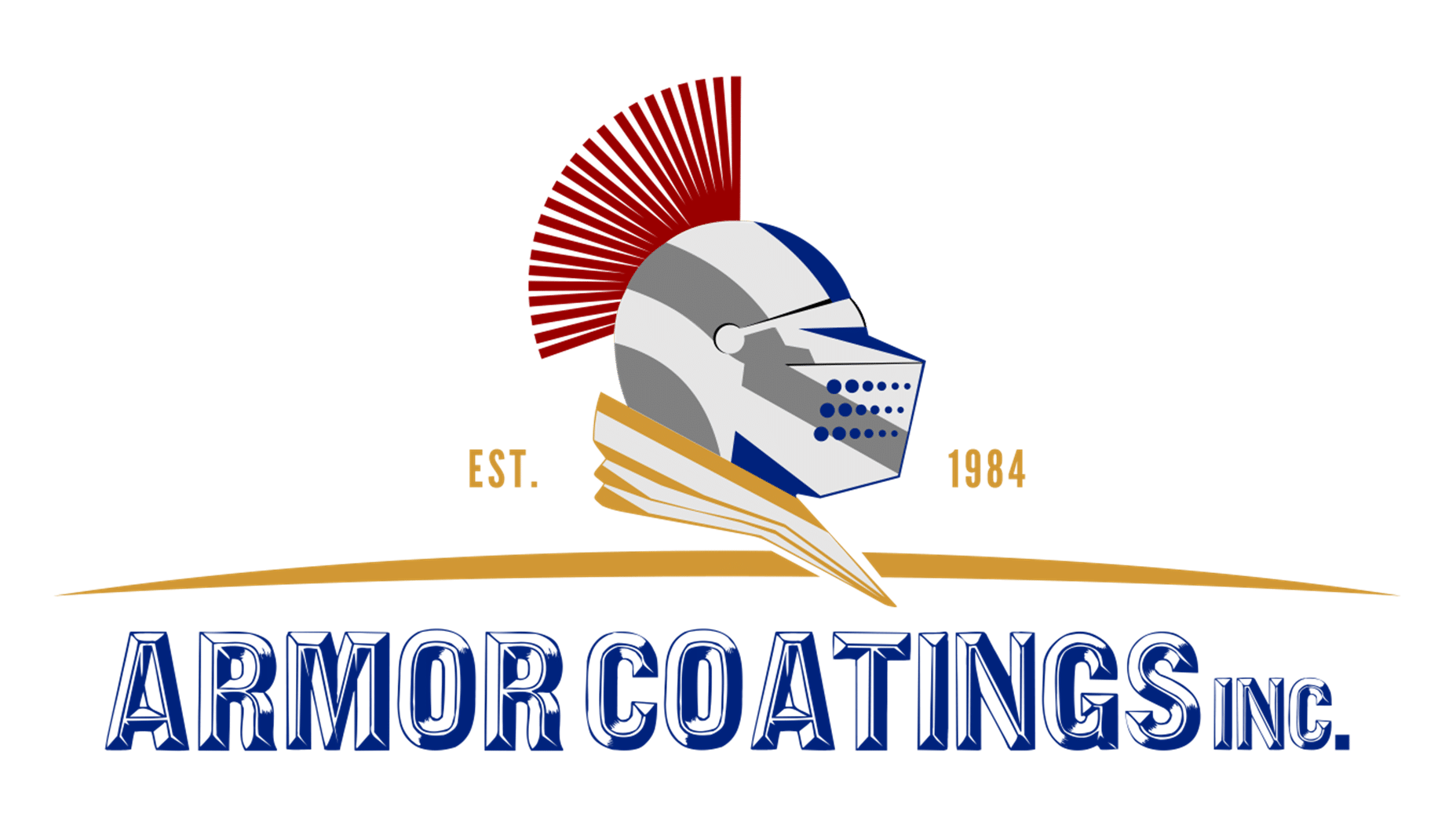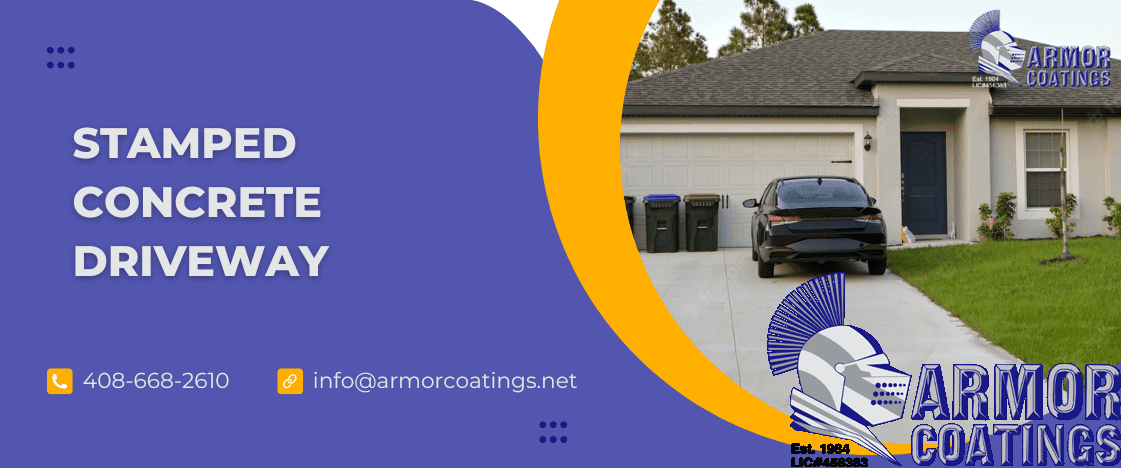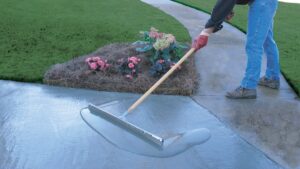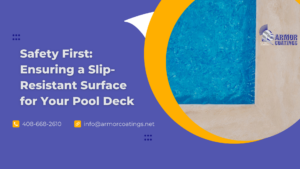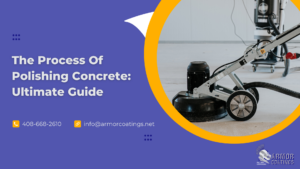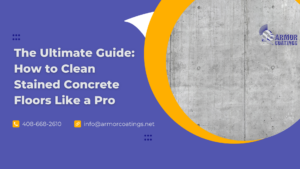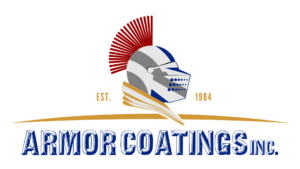Stamped concrete, often called textured or imprinted concrete, replicates natural stone, such as slate and flagstone, tile, brick, and even wood. The wide variety of concrete patterns, design ideas, and color choices make it popular for beautifying patios, pool decks, driveways, and more. Additionally, it’s an affordable paving option that requires less maintenance than other materials.
Is Stamped Concrete Good For Driveways?
There are many benefits to having your driveway paved with stamped concrete, including:
- Affordability: Gives you a look and feel of natural stone, brick, or pavers for less money
- Durability: Stands up to weather and heavy traffic for years when sealed and maintained properly
- Versatility: Offers many pattern and color choices to make your driveway visually appealing
Cost for Stamped Concrete per Square Foot
Most stamped concrete cost between $12 and $18 a square foot. The lower end of the costs usually includes a solid-color stain, while the higher prices may consist of two colors, one of them hand-applied or hand-wiped. Fees can be higher if you have two different patterns stamped simultaneously, such as having a contrasting border, more than two colors applied, or more than one color hand-applied or hand-wiped. In these instances, costs can reach $20 a square foot for some driveways.
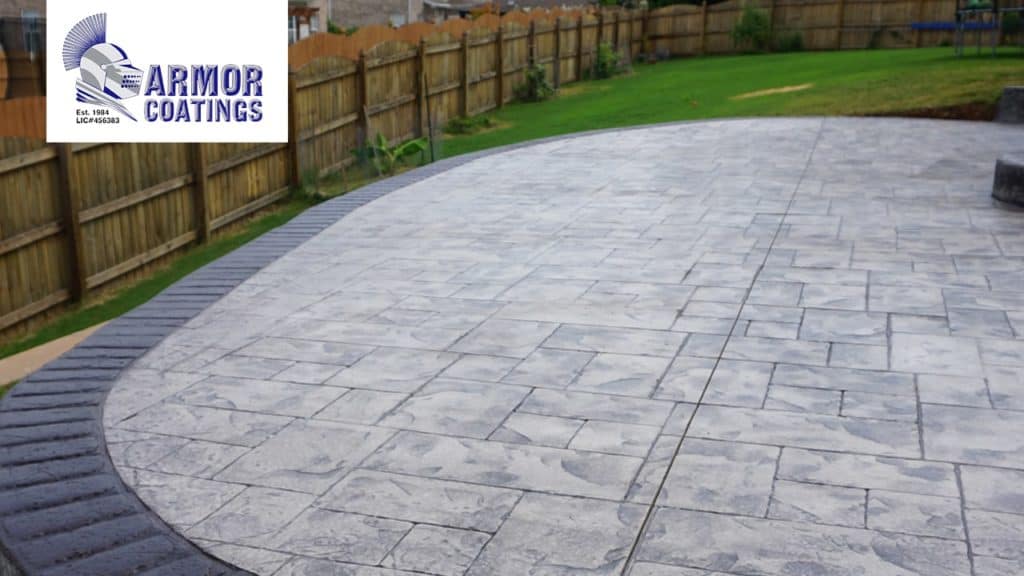
Stamped Concrete Driveway Patterns
You have many patterns to choose from, depending on the company you work with. The stamps are made to cover large areas and create repeating patterns with different textures and sizes. While every company may have some proprietary designs, a few are universally popular and likely found everywhere.
CONTACT US
Hire the expert team at Armor Coatings today!
Cobblestone Stamped Concrete Driveway
Cobblestone stamped concrete driveways are one of the easiest and most popular. The sizing of the “cobblestones” may be uniform or vary, with some larger or smaller than others for more authenticity. They can be a single color or have a range of colors. The more intricate the pattern, the higher the costs. For example, having a uniform size and single color costs closer to $12 a square foot, while varying sizes and multiple colors cost closer to $18 a square foot.
Herringbone Stamped Concrete Driveway
Herringbone stamped concrete driveways come in several styles. The herringbone pattern is made out of rectangles set at 45-degree angles. Those rectangles can be made to look like bricks, stone, tile, or wood in stamped concrete. They can also have different dimensions, colors, and textures. Like with cobblestone, the more intricate, the higher the cost. The pattern is pretty simple, so it comes down to how you want it finished. If you want a lot of color and texture variation, the costs are higher than something more uniform and straightforward.
Ashlar Slate Stamped Concrete Driveway
If you want an intricate and exciting driveway, you can use the ashlar pattern in a slate look. The ashlar pattern is a popular pattern for tiles. It uses rectangles and squares of varying sizes in a repeating pattern. It can also be made to look like different materials. The pattern is given texture and color to resemble the ashlar slate. Because slate varies from Vermont’s solid gray to incredibly varied color patterns from India, Brazil, and China, this pattern can be colored in a range of palettes. The more intricate the coloration, the higher the final cost.
Stamped Concrete Driveway Pros and Cons
Like any material, stamped concrete driveways have pros and cons. Stamped concrete is durable, long-lasting, and attractive. It can provide the look of a stone or brick driveway for less money than if you used those materials. It is also versatile to get a driveway with a wide range of looks and styles.
Like all concrete, stamped concrete does not do well in cold climates. In freeze/thaw conditions, it cracks and develops potholes. It is also more expensive than other driveway types, including plain and textured concrete, asphalt, and gravel.
Additional Considerations and Costs
Stamped concrete is shaped with molds, then stained and colored. The molds are created from the materials the concrete is meant to look like, which gives the driveway an authentic appearance. Like all concrete, stamped concrete is subject to scratching and etching. It is important to keep it sealed and use the right cleaners. Stamped concrete can hide wear better than plain concrete because the textures and colors disguise some issues. Like all concrete, stamped concrete should be sealed. Sealing impedes staining so that oil, grease, and other stains sit on the surface where they can be cleaned off, rather than going deep into the concrete where they cannot be removed. It is best to reseal the concrete roughly every five years. If you have an existing concrete driveway, you must remove it to install the new stamped concrete. Most areas do not require permits for driveways, but some areas may. If you belong to an HOA, you may be subject to their regulations. Always check with your local authorities for more information. Stamped concrete driveways can improve your property’s curb appeal and appearance. This can help it sell more quickly, although it may not raise the resale value.
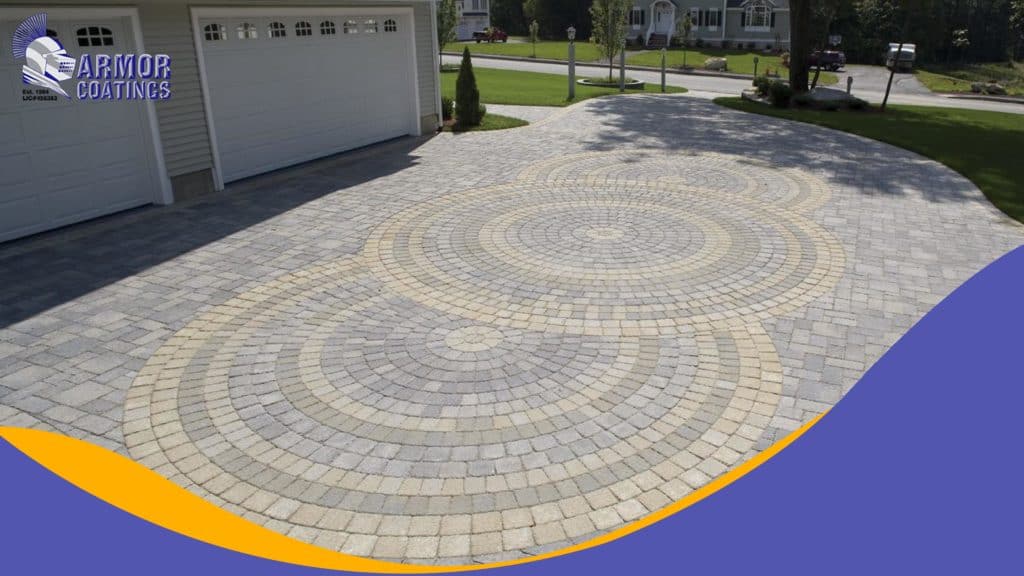
FAQs
Can you paint stamped concrete?
You can, but most stamped concrete is stained during application. The paint should be epoxy-based and designed for concrete. Be advised that it can peel over time.
Is stamped concrete suitable for driveways?
Yes, stamped concrete makes an excellent and attractive surface for driveways. Like all concrete, it does better in warmer climates and should be avoided in freeze/thaw areas to prevent cracking.
Can you power wash stamped concrete driveways?
No, stamped concrete should never be power washed. The pressure can break down the sealer and cause the concrete to lose its colors, finish, and appearance.
Does it look fake?
Stamped concrete looks very realistic because most stamping mats are molded from the actual materials they are designed to replicate. To achieve natural-looking color variations, such as you would see in natural stone, stamped concrete contractors often use integral or dry-shake color in conjunction with surface-applied coloring mediums. If anything, stamped concrete looks better than the real thing because you won’t get weed or moss growth in between the joints, and it won’t rot or splinter if you mimic wood planking.
Is stamped concrete slippery?
Because stamped concrete is a textured surface, it is often more slip resistant than conventional concrete. However, just like natural stone, it can become slippery when wet or if a film-forming sealer has been applied. If stamped concrete is installed in a high-traffic area, such as an entryway or pool deck, there are several things you can do to increase its slip resistance, such as using a heavier texture or adding non-skid additives. Talk to your contractor if you are concerned.
How long does stamped concrete last?
Like conventional concrete, stamped surfaces will last for decades when properly installed and maintained, even when exposed to harsh winter weather conditions. In some cases, stamped concrete can be even more durable than standard concrete, mainly if a color hardener was used when it was poured. Most contractors also apply a sealer to stamped concrete to protect it from wear and abrasion and make it easier to maintain.
How is Stamped Concrete Installed?
Many steps in stamped concrete must be executed carefully and quickly to achieve consistent results across the entire slab before the concrete sets. The pattern must be pre-planned and diagrammed, tools and labor ready to go. After the concrete is poured and allowed to set to the proper consistency, color hardeners and release agents are applied. The concrete is tested again before using the stamp patterns. Finish work, detailing and cutting contraction joints finish the project.
Most often, stamping is done on newly poured concrete. However, existing concrete in good condition can be covered with a stamped overlay, which gives you the same look as conventional stamped concrete.
Can I do it myself?
We don’t recommend installing stamped concrete as a DIY project, and the main reason is that you only have one chance to get it right. You can’t finish it later if you run out of time and you can’t take it apart and re-do it. With all of the things that can go wrong, from sub-base preparation and concrete mix to gauging the proper time to start stamping and finishing before the concrete hardens, and everything in between, it’s a job best left to the pros. What’s more, the stamping tools and materials you’ll need can cost hundreds of dollars and aren’t worth the investment unless you plan to use the tools on multiple projects.
How do I hire the right contractor to install my stamped concrete?
When choosing any contractor to do projects around your home or business, you should get several written estimates and check their references carefully. With stamped concrete, it’s vital to find a stamped concrete contractor who can show you a portfolio of their work and provide actual samples of the patterns and colors they offer. Some decorative concrete contractors have showrooms with all their pieces on display. Another option is to visit the contractor’s website, where you’ll often find photos of their projects and a description of the types of decorative concrete they specialize in.
